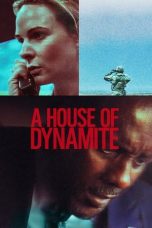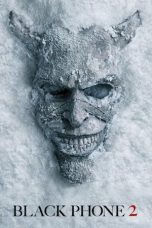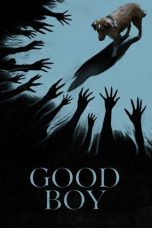Shut In – A Detailed Review
Introduction
“Shut In” (2016) is a psychological thriller directed by Farren Blackburn and starring Naomi Watts, Oliver Platt, and Jacob Tremblay. The film, set in a remote New England town, delves into the mind of a child psychologist who becomes entangled in a series of unsettling events. This review explores every aspect of the movie, from its plot and characters to its availability on streaming platforms, providing a comprehensive guide for those intrigued by this chilling thriller.
Plot Summary
The story of “Shut In” revolves around Mary Portman (Naomi Watts), a child psychologist dealing with the aftermath of her husband’s death and the resulting coma of her stepson, Stephen (Charlie Heaton). Isolated in a rural home during a severe winter storm, Mary begins to experience strange occurrences after one of her young patients, Tom (Jacob Tremblay), goes missing. As Mary struggles to maintain her sanity, she uncovers a dark truth that challenges her perception of reality and her understanding of the people around her.
Character Analysis
Mary Portman is a deeply complex character. Naomi Watts delivers a compelling performance as a woman grappling with grief, guilt, and a growing sense of paranoia. Stephen Portman, portrayed by Charlie Heaton, adds a layer of tension with his presence, creating an eerie atmosphere. Tom (Jacob Tremblay) serves as a catalyst for the unfolding events, his innocence contrasting with the film’s dark themes. Dr. Wilson (Oliver Platt) provides a touch of rationality, attempting to help Mary navigate her psychological turmoil.
Themes and Symbolism
“Shut In” explores themes of isolation, grief, and the fragility of the human mind. The remote setting and relentless snowstorm symbolize Mary’s emotional state—cold, isolated, and trapped. The film also delves into the nature of perception, questioning what is real and what is a product of a disturbed mind. These themes add depth to the narrative, encouraging viewers to reflect on their own fears and uncertainties.
Directorial Style
Farren Blackburn’s direction brings a tense and claustrophobic atmosphere to “Shut In.” His use of tight framing and slow pacing heightens the sense of isolation and dread. Blackburn effectively employs visual and auditory cues to build suspense, creating a gripping psychological thriller that keeps audiences on edge.
Cinematography
The cinematography in “Shut In” is visually striking, with the snowy, desolate landscape serving as a backdrop for the unfolding drama. The use of dim lighting and shadow enhances the film’s eerie mood, while close-up shots capture the characters’ emotional turmoil. These visual techniques contribute to the film’s overall sense of unease.
Special Effects
While “Shut In” relies more on psychological horror than special effects, the practical effects used are effective in creating a chilling atmosphere. The film’s climax features well-executed sequences that blend practical and digital effects to enhance the suspense and horror elements.
Soundtrack and Sound Design
The soundtrack and sound design play crucial roles in “Shut In.” Composer Nathaniel Méchaly’s score accentuates the film’s tension, using subtle, haunting melodies to underscore key moments. The sound design, featuring creaks, whispers, and sudden noises, adds to the unsettling ambiance, making the audience constantly aware of the looming threat.
Critical Reception
Upon its release, “Shut In” received mixed reviews from critics. While some praised Naomi Watts’ performance and the film’s atmospheric tension, others criticized the plot for its predictability and lack of originality. Despite this, “Shut In” has found an audience among fans of psychological thrillers, appreciated for its intense and claustrophobic storytelling.
Cultural Impact
Though not a major blockbuster, “Shut In” has made its mark in the psychological thriller genre. Its exploration of mental health and the boundaries of reality resonates with audiences, reflecting broader cultural discussions about these themes. The film’s tense, isolated setting has also inspired similar narratives in subsequent horror and thriller films.
Comparative Analysis with Similar Films
“Shut In” can be compared to other psychological thrillers like “The Others” and “The Babadook,” which also explore themes of grief and isolation. While it may not reach the same critical acclaim as these films, “Shut In” offers a unique perspective on these themes, distinguished by its setting and character dynamics.
Behind the Scenes
The production of “Shut In” involved several noteworthy elements. Naomi Watts’ commitment to her role is evident in her nuanced performance, and the film’s remote setting posed challenges for the cast and crew, enhancing the authenticity of the isolation depicted on screen. Director Farren Blackburn’s background in television brought a disciplined approach to the film’s tight pacing and suspense.
Streaming Availability
For those looking to watch “Shut In,” several streaming options are available. In the United States, the film can be streamed on platforms like Amazon Prime Video and Hulu. These services offer the movie as part of their subscription packages, making it easily accessible for fans of psychological thrillers.
Rental and Purchase Options
In addition to streaming, “Shut In” can be rented or purchased digitally on various platforms. Amazon, iTunes, Google Play, and Vudu provide options for both rental and purchase, allowing viewers to own a copy or watch it on a temporary basis. These services offer high-definition versions, ensuring a quality viewing experience.
Viewer’s Perspective
From a viewer’s perspective, “Shut In” delivers a mix of psychological tension and emotional depth. Its exploration of a mother’s grief and guilt, combined with the supernatural elements, creates a compelling narrative. While some may find the plot twists predictable, the film’s atmosphere and performances make it an engaging watch for fans of the genre.
Psychological Elements
“Shut In” delves deeply into psychological horror, exploring the boundaries of sanity and the impact of isolation on the human mind. The film’s portrayal of Mary’s deteriorating mental state is both harrowing and thought-provoking, inviting viewers to question their own perceptions of reality.
Rewatch Value
“Shut In” holds significant rewatch value due to its layered narrative and psychological complexity. Fans often revisit the film to uncover subtle hints and foreshadowing they may have missed initially. Its place within the psychological thriller genre also encourages repeated viewings to appreciate its atmospheric tension.
Trivia and Fun Facts
The film includes several interesting trivia and behind-the-scenes facts. For instance, Naomi Watts’ intense performance was influenced by her real-life experience as a mother, adding authenticity to her portrayal of Mary. Additionally, the film’s production faced challenges due to the remote, snowy location, which contributed to the genuine feeling of isolation.
Conclusion
“Shut In” is a gripping psychological thriller that combines strong performances with atmospheric tension. Its exploration of grief, isolation, and the fragility of the human mind ensures its place within the genre. Whether you’re a fan of psychological horror or discovering it for the first time, “Shut In” offers a chilling and thought-provoking cinematic experience.
Frequently Asked Questions
Is “Shut In” available on Netflix?
No, as of now, “Shut In” is not available on Netflix. However, it can be streamed on Amazon Prime Video and Hulu.
Who directed “Shut In”?
Farren Blackburn directed “Shut In.”
What is the premise of “Shut In”?
The film follows a child psychologist who, isolated in her rural home during a winter storm, experiences strange occurrences after one of her young patients goes missing.
Where can I rent or purchase “Shut In”?
The film can be rented or purchased digitally on platforms such as Amazon, iTunes, Google Play, and Vudu.
When was “Shut In” released?
“Shut In” was released in 2016.
Is “Shut In” a horror movie?
“Shut In” is primarily a psychological thriller with elements of horror.
















